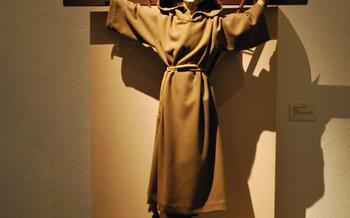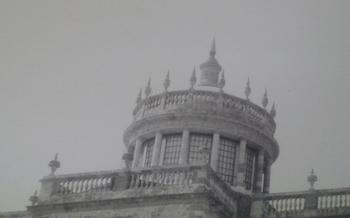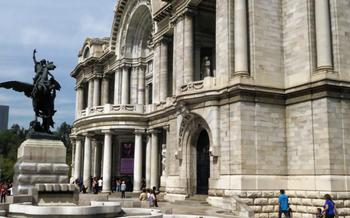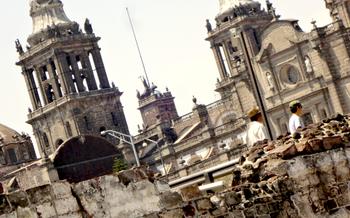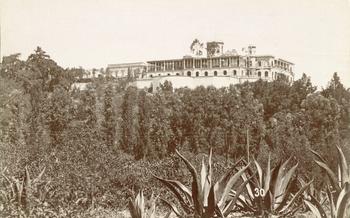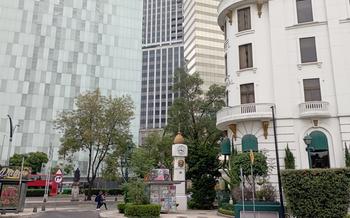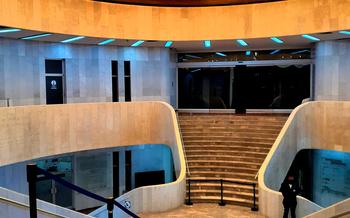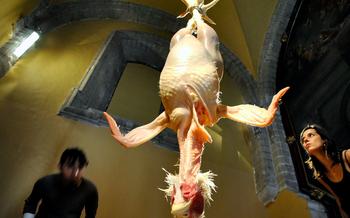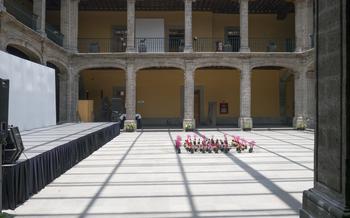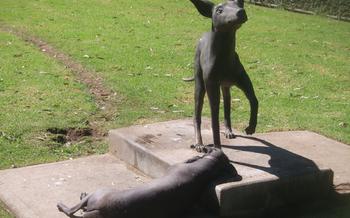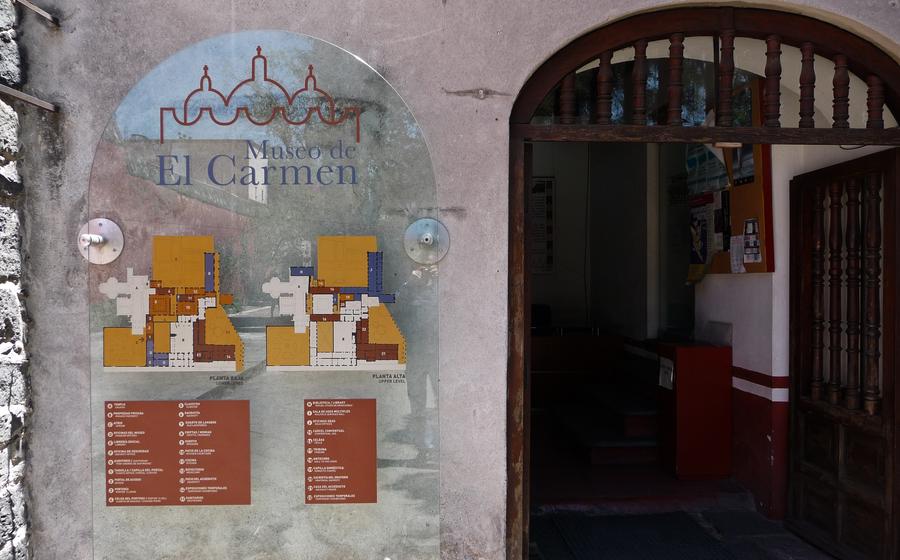
Museo de El Carmen
- Historical Background
- Museo de El Carmen's Architecture
- Permanent and Temporary Exhibitions
- Art Collection
- Interactive Exhibits
- Guided Tours
- Museo de El Carmen's Courtyard: A Tranquil Oasis in the City's Heart
- Artisans' Market
- Cafe or Restaurant
- Accessibility
- Admission Fees and Discounts
- Operating Hours
- Location and Transportation
- Photography and Videography
- Insider Tip:
Historical Background
The Museo de El Carmen, a cultural and historical landmark in Mexico City, traces its origins back to the 16th century when it was established as a Carmelite convent. Dedicated to Our Lady of Mount Carmel, the convent served as a place of worship and residence for Carmelite nuns for over two centuries. During this time, the convent underwent several renovations and additions, resulting in a blend of architectural styles that reflect the changing tastes and influences of the era. In the 19th century, the convent was secularized and transformed into a museum, opening its doors to the public to showcase its rich history, art, and architecture. Today, the Museo de El Carmen stands as a testament to Mexico's colonial heritage, providing visitors with a glimpse into the lives of the Carmelite nuns and the cultural and artistic expressions of the time.
Museo de El Carmen's Architecture
The Museo de El Carmen stands as a testament to the architectural fusion of Baroque and Neoclassical styles. Constructed in the 17th century, the museum's facade boasts an intricate Baroque doorway, featuring carved stone cherubs and intricate floral motifs. The interior courtyard, known as the Patio de los Naranjos, showcases a blend of Baroque and Neoclassical elements, with its elegant arches, slender columns, and vibrant frescoes adorning the walls. The main cloister, known as the Claustro Grande, exemplifies the Neoclassical style, with its simple lines, symmetrical layout, and serene atmosphere. These architectural elements combine to create a visually captivating and historically significant space that transports visitors back in time.
Permanent and Temporary Exhibitions
The Museo de El Carmen boasts an impressive permanent collection that showcases a diverse array of art and artifacts from Mexico's colonial period. Visitors can marvel at exquisite paintings, intricate sculptures, and religious objects that provide a glimpse into the country's rich cultural heritage. Notable works include the "Virgin of Carmel" by Juan Correa, a masterpiece of colonial painting, and the "Ecce Homo" by Pedro de Mena, a poignant sculpture depicting the suffering of Christ.
In addition to its permanent collection, the museum hosts temporary exhibitions that delve into specific themes or highlight the works of renowned artists. These exhibitions are a testament to the museum's commitment to promoting contemporary art and fostering cultural dialogue. Past exhibitions have explored topics such as the history of Mexican muralism, the influence of European art on Mexican culture, and the works of prominent Mexican artists like Frida Kahlo and Diego Rivera.
Art Collection
The Museo de El Carmen houses a remarkable collection of art and artifacts that span several centuries of Mexican history. Among the must-see artworks is the impressive sculpture of "The Entombment of Christ" by Manuel Tolsá, a masterpiece that captures the emotional intensity of the moment with intricate detail. Another highlight is the painting "The Virgin of Carmen" by Cristóbal de Villalpando, a stunning depiction of the museum's patron saint. The museum also boasts a collection of religious objects, including ornate chalices, elaborate vestments, and finely crafted reliquaries, offering a glimpse into the rich Catholic heritage of Mexico. These artworks provide a captivating journey through Mexico's artistic and cultural legacy, inviting visitors to delve deeper into the nation's vibrant history and traditions.
Interactive Exhibits
The Museo de El Carmen offers a range of interactive exhibits and educational programs tailored to enhance the visitor experience, particularly for families with children. These exhibits aim to make history and art come alive, fostering cultural learning in a fun and engaging manner. Visitors can participate in hands-on activities, solve puzzles, and engage with multimedia displays that provide deeper insights into the museum's collection and the history of Mexico.
One popular interactive exhibit is the "Virtual Reality Experience," which allows visitors to immerse themselves in the colonial era through a virtual reality headset. They can explore the streets of old Mexico City, visit historical landmarks, and interact with virtual characters, providing a unique and unforgettable experience.
Another highlight is the "Children's Workshop," where young visitors can unleash their creativity and learn about art through hands-on activities. They can create their own miniature colonial-style paintings, mold clay figurines, or engage in storytelling sessions that bring history to life.
Through these interactive exhibits, the Museo de El Carmen strives to create a dynamic and engaging environment that encourages visitors of all ages to explore, learn, and connect with the rich cultural heritage of Mexico.
Guided Tours
For a more immersive experience, consider taking advantage of the guided tours offered by the Museo de El Carmen. Led by knowledgeable docents, these tours provide insightful commentary on the history, art, and architecture of the museum. As you wander through the galleries, your guide will bring to life the stories behind the artworks and artifacts, offering a deeper understanding of Mexico's rich cultural heritage. Whether you're an art enthusiast, a history buff, or simply curious about Mexican culture, these guided tours are an excellent way to enhance your visit and make the most of your time at the museum.
Museo de El Carmen's Courtyard: A Tranquil Oasis in the City's Heart
Step into the heart of the Museo de El Carmen and discover a hidden gem—a serene and tranquil central courtyard that offers a respite from the bustling city. Designed in a classic Mexican style, the courtyard is a delightful blend of lush greenery, vibrant flowers, and a soothing fountain. Take a moment to pause and admire the beauty of nature as you stroll through the manicured gardens, enjoying the gentle breeze and the sound of trickling water.
This tranquil oasis within the museum's walls provides a welcome retreat for weary travelers and art enthusiasts alike. Whether you're seeking a moment of solitude to reflect on the museum's exhibits or simply looking to escape the hustle and bustle of the city, the courtyard offers a peaceful sanctuary. As you sit on one of the benches, surrounded by vibrant flora, you'll feel a sense of calm wash over you, allowing you to fully immerse yourself in the museum's cultural and historical treasures.
Artisans' Market
Nestled within the grounds of the Museo de El Carmen, visitors will find a charming artisans' market, a treasure trove of handmade crafts and souvenirs. Here, local artisans showcase their skills and creativity, offering a unique shopping experience that supports the preservation of traditional Mexican craftsmanship. From intricate pottery and colorful textiles to hand-carved wooden figures and sparkling jewelry, the market offers a diverse array of items that capture the essence of Mexican culture. Whether you're looking for a one-of-a-kind gift or a special memento of your visit to Mexico City, the artisans' market at the Museo de El Carmen is a must-visit destination.
Cafe or Restaurant
If you're feeling peckish during your visit, you'll be pleased to know that the Museo de El Carmen has a charming cafe where you can grab a bite to eat or a refreshing drink. The cafe offers a delightful selection of light snacks, sandwiches, salads, and beverages, perfect for refueling after exploring the museum's exhibits.
The cafe is housed in a beautifully restored colonial building and features a cozy and inviting atmosphere. It's the perfect place to relax and recharge before continuing your exploration of the museum or the surrounding area.
So, whether you're looking to enjoy a quick snack or a leisurely lunch, the cafe at the Museo de El Carmen has something to satisfy your appetite.
Accessibility
The Museo de El Carmen is committed to ensuring that all visitors, regardless of their abilities, can enjoy its cultural offerings. To this end, the museum has implemented various accessibility features to make it inclusive and welcoming to everyone. Wheelchair ramps and elevators provide easy access to all floors of the museum, while adapted restrooms cater to the needs of visitors with disabilities. Additionally, the museum offers guided tours in sign language for visitors with hearing impairments. These thoughtful considerations demonstrate the museum's dedication to creating an environment where everyone can learn, explore, and appreciate the rich history and art of Mexico.
Admission Fees and Discounts
Admission to the Museo de El Carmen is generally affordable, making it accessible to visitors of all backgrounds. The standard admission fee for adults is around $6 USD, while students, seniors, and children may be eligible for discounted rates. The museum also offers free admission on certain days of the week or during special events, so it's worth checking their website or inquiring at the ticket counter for more information. Additionally, visitors can purchase a combined ticket that grants access to both the Museo de El Carmen and the adjacent Museo de San Angel, offering a great value for those interested in exploring both institutions.
Operating Hours
The Museo de El Carmen is open to the public from Tuesday to Sunday, with the following operating hours:
- Tuesday to Saturday: 10:00 AM to 5:00 PM
- Sunday: 10:00 AM to 3:00 PM
The museum is closed on Mondays and some holidays, so it is advisable to check their website or call ahead to confirm their hours of operation before planning your visit.
To make the most of your visit, it is recommended to arrive early to avoid crowds, especially on weekends. Allow yourself ample time to explore the permanent and temporary exhibitions, admire the architecture, and stroll through the serene courtyard.
Location and Transportation
The Museo de El Carmen is strategically located in the heart of Mexico City's historic center, at the address Avenida Revolución 4 y Suárez, on Line 2, which offers convenient access to the museum. Simply follow the signs from the station to reach the museum within a short walk. Alternatively, visitors can take a taxi or ride-sharing service to get to the museum directly. With its prime location, the Museo de El Carmen is easily accessible from any part of the city, inviting visitors to immerse themselves in the cultural and historical treasures it holds.
Photography and Videography
Photography and videography are generally allowed within the Museo de El Carmen, but it's essential to be mindful of the museum's guidelines. Flash photography is not permitted, as it can damage the delicate artworks and artifacts. Additionally, visitors are requested to be respectful of other guests and avoid taking photos or videos that may disrupt their experience. It's always a good idea to ask permission before photographing or filming anyone, especially if they are engaged in a private conversation or activity. By following these guidelines, you can contribute to a positive and respectful environment for all visitors to enjoy.
Insider Tip:
To make the most of your visit to the Museo de El Carmen, plan your trip for a weekday morning. This way, you can avoid the weekend crowds and have a more intimate experience with the museum's collection. Additionally, be sure to explore the charming neighborhood surrounding the museum. Take a stroll down the picturesque Calle de Regina, lined with colorful colonial buildings and lively cafes, and discover hidden gems like the Museo de la Ciudad de México, showcasing the city's rich history from pre-Hispanic times to the present day.
